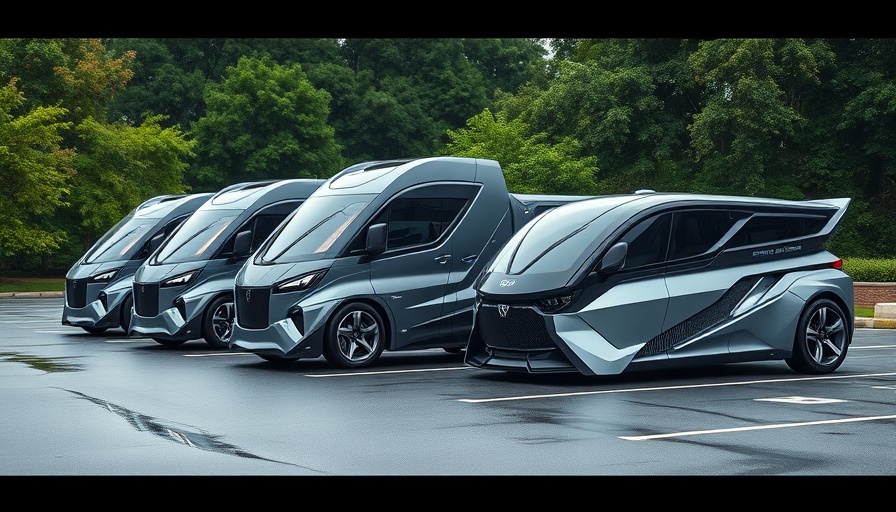
The Impact of Depreciation on Tesla's Cybertruck Trade-ins
Tesla's decision to allow Cybertruck trade-ins has revealed challenging news for owners. As reported, depreciation rates for the Cybertruck could spike to as high as 45%, stripping significant resale value from these anticipated electric vehicles. For context, a recently highlighted transaction showed a 2024 all-wheel-drive model valued at $63,100 after just 19,623 miles, marking a 37% depreciation. Another top-end model purchased for $127,000 is now being quoted at $78,200—a 38% decline in its first eight months. These figures raise substantial concerns among early adopters and tech-savvy professionals who invested in what many perceived as the future of automotive technology.
The Technological Repercussions of High Depreciation Rates
This depreciation—a common issue across the electric vehicle (EV) spectrum—reflects broader patterns in consumer attitudes and market expectations surrounding sustainable technologies. According to industry insights, certain vehicle brands can face losses up to 50% in their first year, leading to a critical examination of the overall economic viability of electric vehicles. Trade-in values often lag behind private party sales which can further drive buyers away. Amidst the rise of tech-driven industries, EV companies must consider innovative approaches to retain value, such as enhancing technology, sustainability assurances, or consumer experiences with their products.
The Reasons Behind Tesla's Trade-in Policy Changes
Since its inception, Tesla maintained a stringent stance against reselling to control market perception and curb scalping of its high-demand vehicles. The trade-in policy shift may come in response to recent complaints about quality control and safety issues, including reports of runaway gas pedals. Consumers, in their quest for innovation and reliability, expect brands to address such concerns proactively, further influencing resale values.
Exploring Electric Vehicles in Today's Market
Facing the mounting depreciation concerns, it is essential to consider the larger landscape of the electric vehicle market. The economic repercussions stemming from technological advancements not only affect Tesla but resonate throughout the automotive sector. Professionals in tech-driven industries may look to established case studies of EV investments to develop keen strategies that balance innovation and practicality while remaining responsive to consumer insights.
Potential Strategies for Cybertruck Owners
Owners contemplating trade-ins could benefit from a more strategic approach to maximize their vehicle's return. Engaging with the existing Tesla community can provide actionable insights on when and how to transition their investment. Additionally, keeping tabs on emerging technologies and consumer trends in sustainability can enhance their future purchasing decisions. As the tech industry evolves, so do the methods for capitalizing on one's investments in innovative vehicles.
As the market continues to mature, Tesla’s situation serves as a poignant reminder of the complexities surrounding emerging technologies, sustainability, and consumer expectations. Understanding these shifts can empower stakeholders—from professionals to investors—to navigate the evolving landscape more effectively.
Conclusion: The Future of New Technologies and Market Trends
As Tesla adapts its policies in response to market realities, stakeholders must remain engaged with industry trends and consumer insights to expertly navigate the complexities of evolving investments. For those ready to leverage these insights, action becomes paramount. Stay informed of the latest technology trends, explore emerging startups in the EV sector, and harness data-driven analyses to refine your future business plans.
 Add Row
Add Row  Add
Add 




 Add Row
Add Row  Add
Add 

Write A Comment